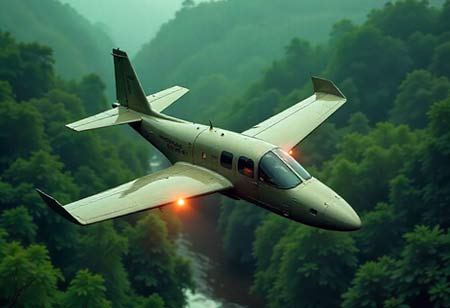The aeronautical flight inspection service sector in Latin America is undergoing a significant transformation, driven by growing demand and technological advancements. As air traffic increases across the region and new infrastructure projects take shape, the need for precise and reliable flight inspection services has never been more crucial. The growth of both domestic and international air travel depends on the effectiveness and safety of air navigation systems, which are guaranteed by these services. With these evolving demands come new opportunities and challenges, prompting innovative solutions that are reshaping the landscape of aeronautical inspection services in the region.
Shifting Dynamics and Growing Demand
The flight inspection industry in Latin America has entered an accelerated phase of development as both established and emerging aviation markets require higher levels of precision and reliability in their air navigation systems. As air traffic volumes rise, airports and air traffic control operators are increasingly turning to sophisticated technologies to meet the demand for accurate, timely inspections of air navigation equipment. This has spurred the adoption of state-of-the-art flight inspection tools that blend traditional methods with cutting-edge technology, ensuring systems operate at peak performance.
One of the most notable trends is the integration of unmanned aerial vehicles (UAVs) into flight inspection practices. These advanced drones can now provide real-time data on navigational aids, reducing inspection time and costs while improving the accuracy of results. By inspecting distant or hard-to-reach infrastructure, UAVs equipped with high-definition cameras and sensors offer operational flexibility previously unattainable. In addition to reducing the hazards typically associated with manual flight inspections, this integration is helping the sector more effectively comply with new operational standards and regulatory requirements.
In parallel, automation and AI-driven systems are playing an increasingly prominent role in the sector. With these technologies, flight inspection teams can now evaluate enormous volumes of data quickly and precisely, providing operators with real-time, actionable information. By leveraging artificial intelligence to analyze flight data, service providers are achieving greater precision in system assessments and defect identification, reducing the risk of human error and streamlining decision-making. As air traffic expands rapidly, this technological shift is enabling Latin America’s flight inspection sector to keep pace with growing demand.
Challenges in the Flight Inspection Sector
The flight inspection service industry in Latin America faces significant challenges, primarily due to the region’s diverse and often difficult geographical conditions. Mountainous terrain, dense forests, and expansive rural areas present logistical hurdles, making inspections complex and costly. Inspectors frequently need to cover vast regions with limited infrastructure, increasing both operational expenses and time requirements. The precision required for flight inspections further intensifies the difficulty, as does the potential risk of conducting operations in less-than-ideal weather or environmental conditions. These challenges demand a high level of expertise and adaptability from both flight teams and the technologies they employ.
To address these issues, the industry is turning to more resilient and versatile solutions. Hybrid aircraft, combining the benefits of fixed-wing and rotary flight, are increasingly being used to navigate diverse environments, providing more flexibility in inspection coverage. Additionally, advanced weather forecasting systems are enhancing operational planning and reducing the risk of unexpected weather disruptions. On the regulatory front, Latin American countries often have varying standards, creating a complex operating environment. To mitigate this, flight inspection providers are fostering cross-border collaborations with local aviation authorities and investing in continuous training programs, ensuring compliance with both regional and international standards while enhancing operational efficiency.
Innovation and Opportunities for Growth
Recent developments have created numerous opportunities for the Latin American flight inspection services industry, which is expected to continue growing. The demand for flight inspection services will surely rise as the region’s aviation infrastructure grows, driven by new airports and air traffic hubs. More regular and sophisticated inspections will be required as governments and businesses invest in renovating and expanding their airports. This development has given service providers a clear opportunity to expand their market share and reach new customers.
Additionally, there are new opportunities in the aviation inspection industry as environmental sustainability gains greater emphasis. Pressure to implement greener practices in the aviation sector is increasing as nations work to meet carbon reduction targets. Flight inspection service providers are already responding by incorporating more fuel-efficient aircraft and exploring the potential of electric-powered inspection fleets. This move towards cleaner, more sustainable operations is likely to appeal to stakeholders across the aviation ecosystem, who are increasingly looking to reduce their carbon footprints and meet regulatory standards for environmental performance.
The expansion of the digital ecosystem is also opening the door to more integrated flight inspection services. By combining flight inspection data with cloud computing platforms and real-time monitoring systems, service providers can offer clients seamless, data-driven solutions that enhance operational efficiency and reduce downtime. Additionally, the aviation industry’s growing reliance on data analytics is opening up a plethora of potential for flight inspection businesses to provide predictive maintenance services and sophisticated insights. The need for flight inspection solutions that not only ensure compliance with legal requirements but also improve operational efficiency and reduce costs will only grow as technology advances.









